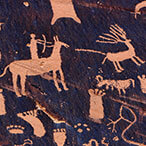


More specifically, some of my recent research has explored the application of "house theory" to our understanding of change and organization in the Southwest.Īnother significant focus has been a cooperative effort with several other scholars-assisted by the financial support of the Andrew Mellon Foundation and a partnership with University of Virginia’s Institute for Advanced Technology in the Humanities-to create an online digital archive ( for Chaco Canyon. I address what I believe are key aspects of organization, ritual and cosmology during the Chacoan era. My recent focus has been on the Chaco Canyon region of northwestern New Mexico, perhaps the most important center of the Pueblo world in the 11th and 12th centuries. He has directed archaeological projects on Arizona’s Northern Black Mesa and in the Chevron region, and near Zuni in New Mexico.My research focuses on culture change in the prehistoric American Southwest, particularly the changing nature of ritual and social organization from approximately A.D.

Stephen Plog is Professor Emeritus in the Department of Anthropology at the University of Virginia. “An excellent overview of current archaeological research…mercifully free of jargon.”įor the revised edition Stephen Plog has updated the text, focusing in particular on new research on the Archaic period and in Chaco Canyon “Translates the dusty stones and bones of the archaeological record into a vibrant image of the people who lived in the ancient pueblos and cliff dwellings of the American Southwest.”-Jonathan Haas, The Field Museum, Chicago “Beautifully produced photography of the landscape, instructive line drawings, maps, as well as discussions of the life, art and dwellings of the mysterious earliest-known settlers of the American Southwest, make this a wonderful source of information…A handy reference for teachers and students of southwestern prehistory, as well as anyone simply curious about the first inhabitants of this part of the country.”-Bloomsbury Review Plog provides a graphic, lucid account of the Anasazi, Hohokam and Mogollon to highlight how these ancient cultures evolved so successfully in response to their changing habitat.”-Science News

The most abundant evidence suggest that people arrived roughly 10,000 years ago, as the Ice Age subsided and the climate became more temperate. “The dry regions of the Southwest contain signs of some of the largest known prehistoric settlements.


 0 kommentar(er)
0 kommentar(er)
